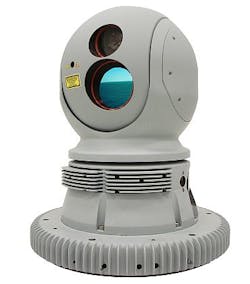FLIR Systems to design thermal imaging sensors for Navy and Coast Guard patrol boats
CRANE, Ind., 25 Sept. 2013. Long-range sensor designers at FLIR Systems Inc. in Billerica, Mass., will build maritime thermal imaging sensors to enhance nighttime operations capabilities for U.S. Navy and Coast Guard patrol boats.
Officials of the Naval Surface Warfare Center in Crane, Ind., awarded a $49.9 million contract to FLIR on Monday for the Patrol Boat Electro-Optics System (PB-EOS). The primary mission of the PB-EOS is to provide enhanced visual imagery to augment existing electronic sensors.
FLIR experts will design the PB-EOS to enhance low-visibility and night navigation; maritime interception; coastal observation and surveillance; insertion and extraction operations; visit, board, search, and seizure operations; combat search and rescue; identification friend or foe; real-time situational awareness and threat warning; reconnaissance and surveillance; and documenting navigational hazards.
The award involves an indefinite-delivery/indefinite-quantity contract for FLIR to build as many as 142 of the PB-EOS electro-optical sensor payloads for small maritime vessels. The contract includes repair, upgrades, training, and spare parts. The five-year contract calls for FLIR to deliver the first PB-EOS system by January.
FLIR specializes in a wide variety of infrared sensors, and has an extensive line of integrated sensor suites for maritime applications. One of the company's notable offerings is the SEAFLIR 380-HLD, which is an all-digital, high-definition system with laser designation. Laser-designation payloads include a NATO PIM coded laser designator.
FLIR also offers the BRITE STAR II maritime sensor, which includes a diode-pumped laser rangefinder/designator for long range target designation. The company also offers the SEA STAR SAFIRE III EO/IR system for the U.S Navy’s Shipboard Protection System (SPS). It carries as many as seven separate sensor payloads, and is qualified for shipboard operations in all orientations.
Another FLIR top-of-the-line maritime electro-optical sensor is the SeaFLIR 230 with 9-inch gimballed turrets. It features a thermal imager with a high-sensitivity 640-by-480-pixel indium antimonide infrared focal plane array (FPA) and 18X zoom with a nominal field of view of 1.2 degrees. The sensor suite also has a daylight camera.
On the PB-EOS contract, FLIR will do the work in Billerica, Mass., and should be finished by September 2018. For more information contact FLIR Systems online at www.flir.com, or the Naval Surface Warfare Center Crane at www.navsea.navy.mil/nswc/crane.
